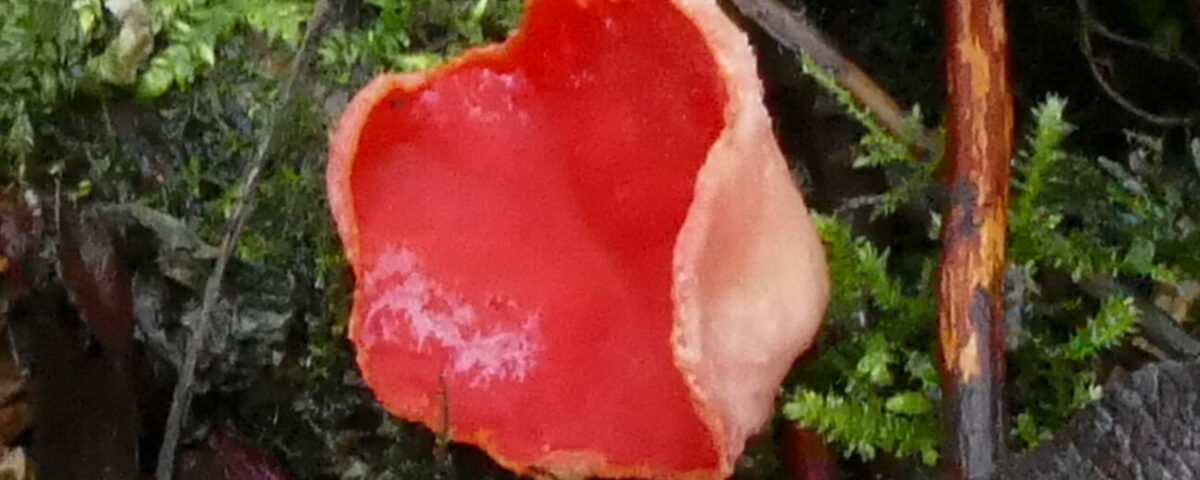Die Pilze der Pflanzenwelt zuzuordnen, ist eigentlich nicht korrekt. Pilze haben sogar mehr Gemeinsamkeiten mit Tieren als mit Pflanzen, zu denen sie lange Zeit gezählt wurden. In der Systematik der Lebewesen wird den Pilzen jetzt ein eigenes Reich zugeteilt.
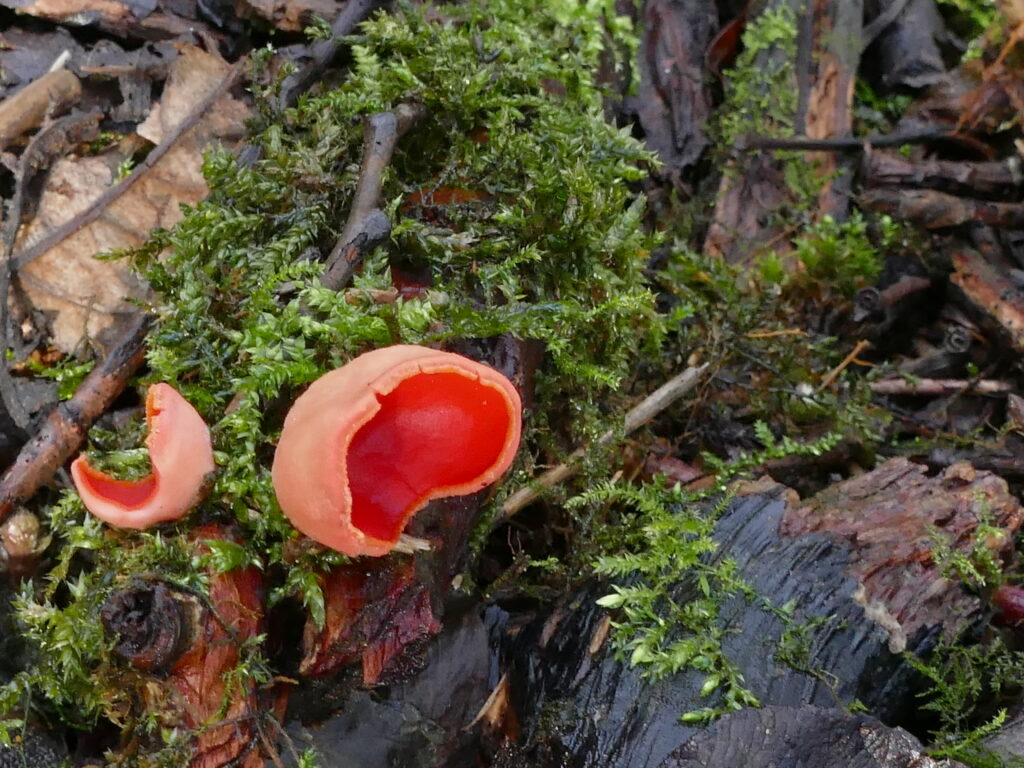
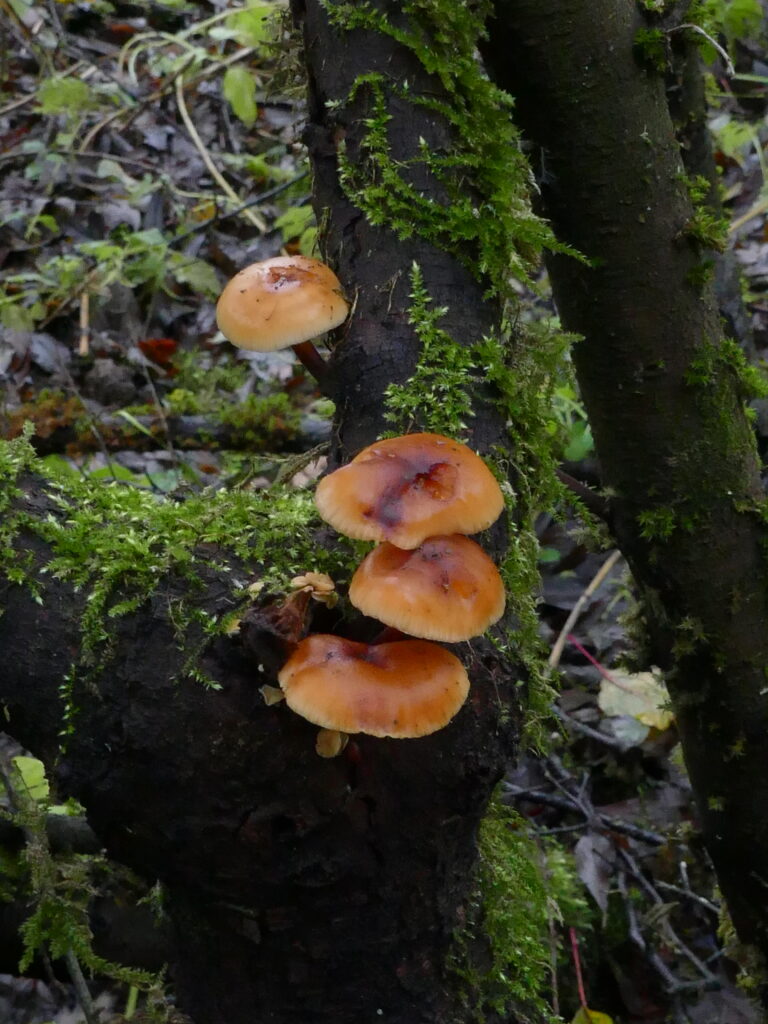
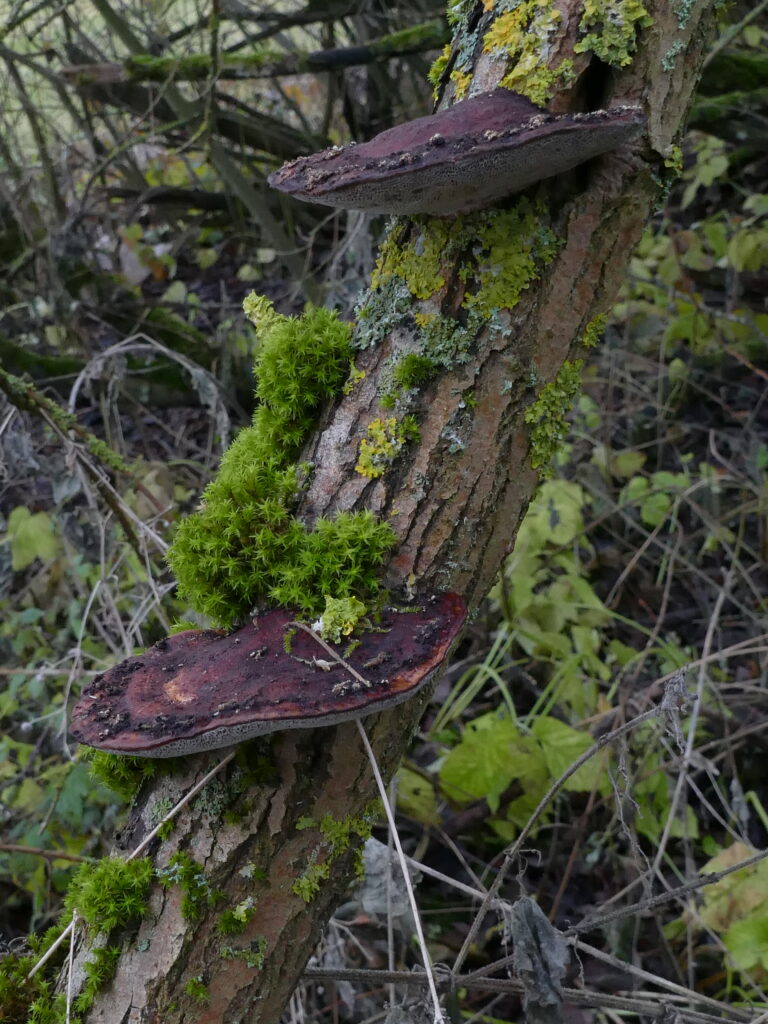
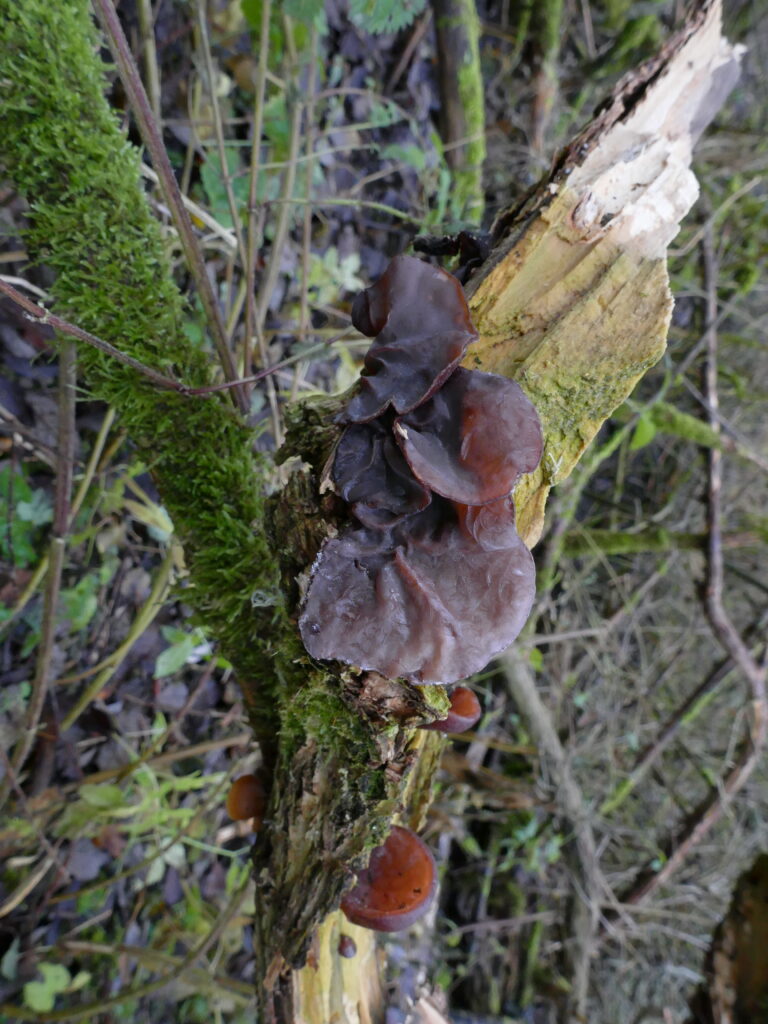
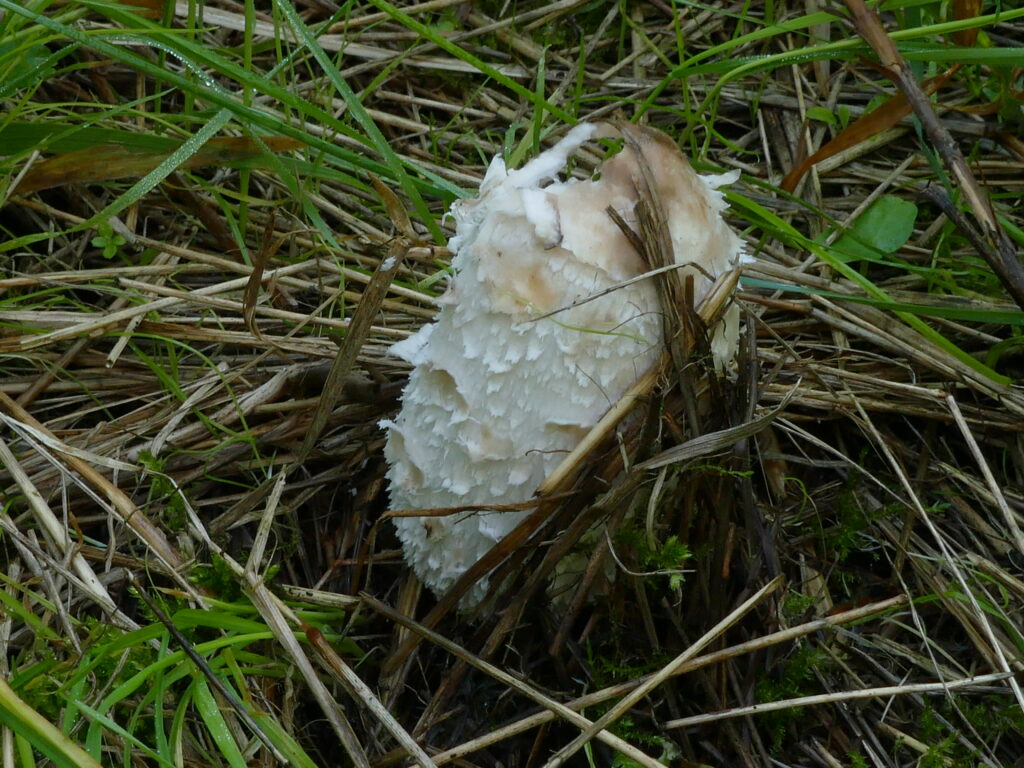
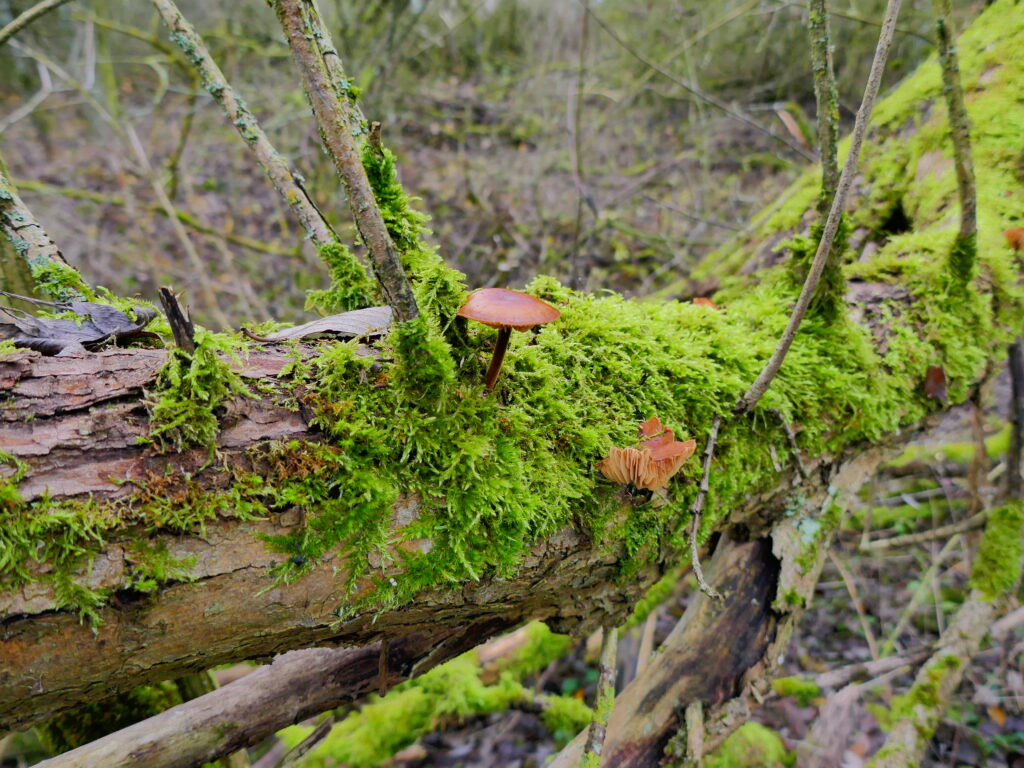
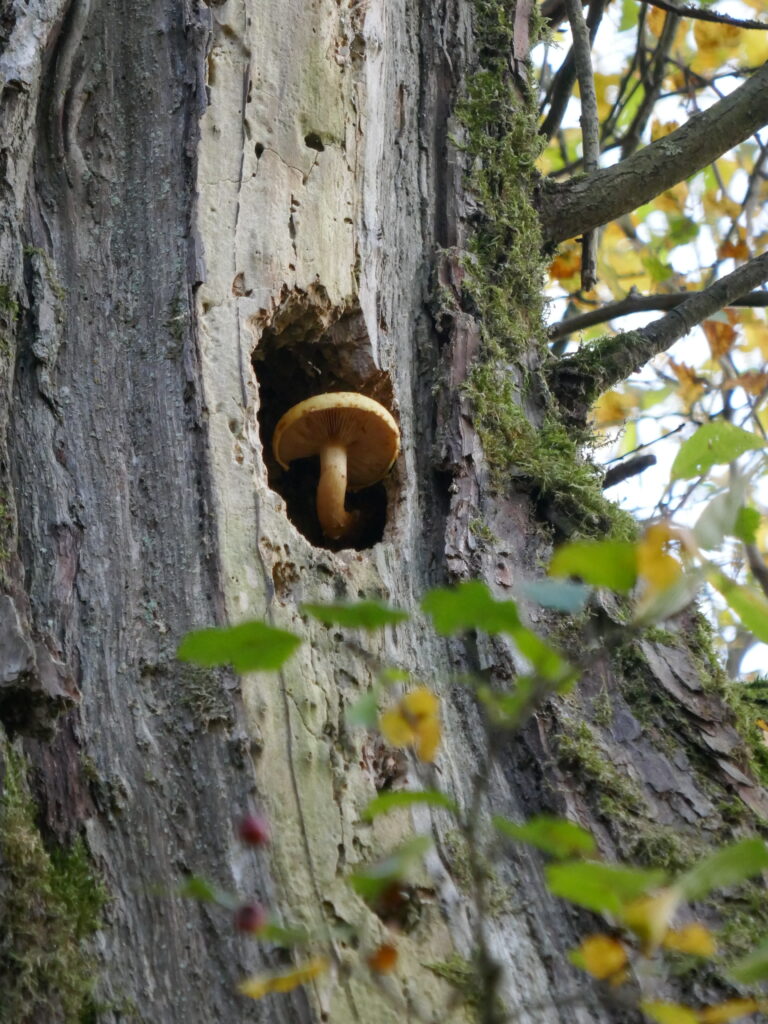
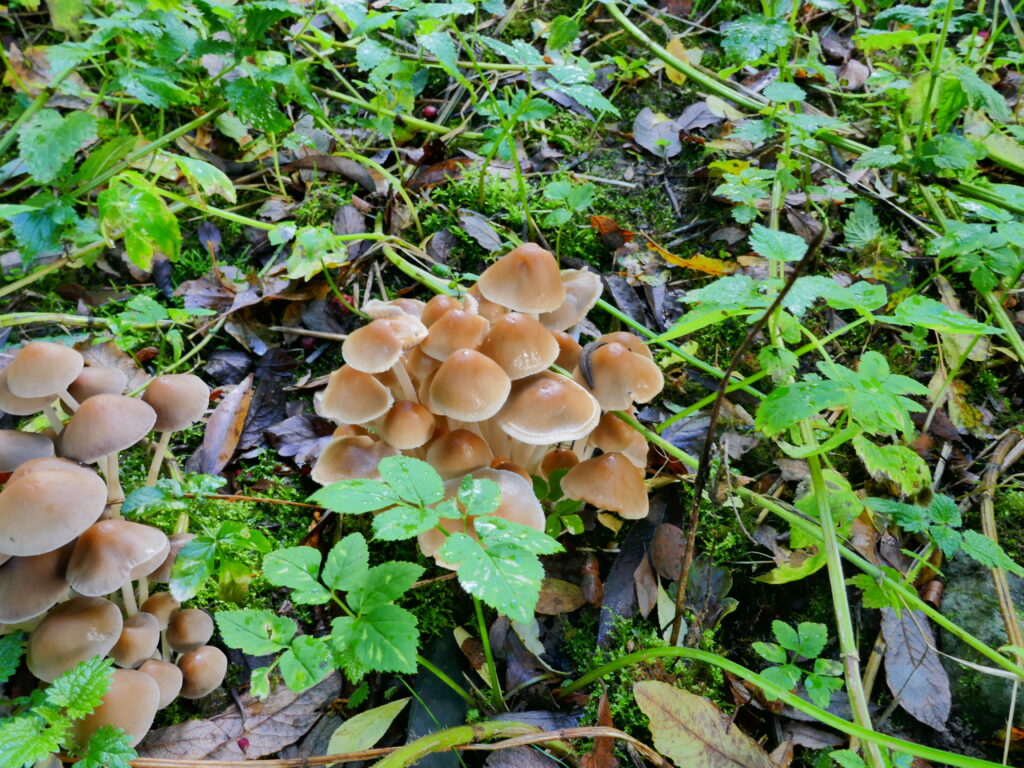
Die Lehmkaul bietet ein interessantes Spektrum an Pilzen, die von dem reichen Totholzvorkommen und der dauernden Feuchtigkeit in den baum- und buschbestandenen Bereichen profitieren. Die Menge an Speisepilzvorkommen ist so gering, dass ein Sammeln absolut nicht lohnt, aber es bleibt die Freude an der Entdeckung und Betrachtung. Und natürlich haben die Pilze eine wichtige Funktion im Kreislauf der Natur. Noch steht eine systematische Erfassung der Pilze in der Lehmkaul aus, abgebildet sind u.a. der Rote Becherling (seltene und nach Roter Liste gefährdete Pilzart, RL 3!), das Judasohr, der Büschelige Faserling(?) und der Schopftintling.
